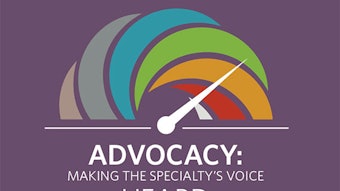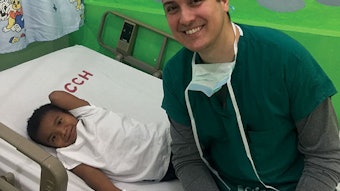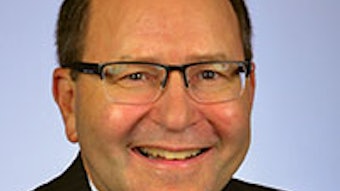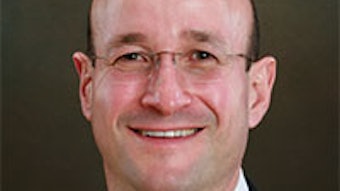Clinical Practice Guideline: A Consumer’s Perspective Commentary: New clinical practice guideline on hoarseness (dysphonia) with permission from the National Spasmodic Dysphonia Association
The Clinical Practice Guideline: Hoarseness (Dysphonia) is designed to provide doctors with evidence-based recommendations for treating patients with dysphonia.
Charlie Reavis, NSDA President
In February 2016, I was asked by the American Academy of Otolaryngology–Head and Neck Surgery Foundation (AAO-HNSF) to serve on a panel as the consumer advocate to update the Clinical Practice Guideline: Hoarseness (Dysphonia). I initially questioned how much I could contribute on a panel of health professionals and, frankly, how would my participation and input be accepted. After some consideration, I decided this was a unique and important opportunity to represent the dysphonia patient community, and I accepted the challenge.
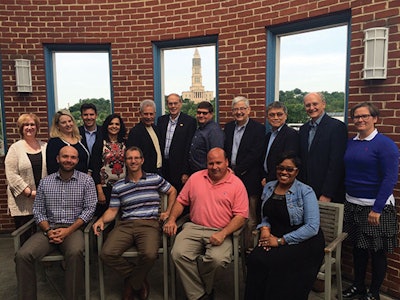 Special thanks to all of the committee members : Top row from left: Helene J. Krouse, PhD, RN; Cecelia Damask, DO; German P. Digoy, MD; Rita R. Patel, PhD, CCC-SLP; Daniel R. Ouellette, MD; Charlie W. Reavis, DMA; Scott McCoy, DMA; Steven R. Strode, MD, MED, MPH; Peak Woo, MD; Marshall E. Smith, MD; and Libby J. Smith, DO; Bottom row from left: David O. Francis, MD, MS; Seth R. Schwartz, MD, MPH; Robert J. Stachler, MD; and Lorraine Nnacheta, MPH
Special thanks to all of the committee members : Top row from left: Helene J. Krouse, PhD, RN; Cecelia Damask, DO; German P. Digoy, MD; Rita R. Patel, PhD, CCC-SLP; Daniel R. Ouellette, MD; Charlie W. Reavis, DMA; Scott McCoy, DMA; Steven R. Strode, MD, MED, MPH; Peak Woo, MD; Marshall E. Smith, MD; and Libby J. Smith, DO; Bottom row from left: David O. Francis, MD, MS; Seth R. Schwartz, MD, MPH; Robert J. Stachler, MD; and Lorraine Nnacheta, MPHThere were two things that stood out immediately. First, I was warmly accepted and quickly became an active panel participant and contributor to the process. Second, it became clear that the guideline, published in 2009, would require a complete rewrite rather than an update of current practices.
The Clinical Practice Guideline: Hoarseness (Dysphonia) is designed to provide doctors with evidence-based recommendations for treating patients with dysphonia. Dysphonia is characterized by altered voice quality, pitch, loudness, or vocal effort that impairs communication and/or quality of life. It affects nearly one-third of the population at some point in their lives. The guideline ensures that current best-case evidence is available to doctors to improve the quality of care for patients with dysphonia.
Changes to the guideline
The new Clinical Practice Guideline on Hoarseness (Dysphonia) delivers an algorithm to healthcare providers to determine when the acceleration in care is needed and serves to meet the following goals:
- Reduce excessive variation in care
- Produce optimal health outcomes
- Prevent delay in evaluation, diagnosis, and treatment
- Improve education among all health professionals
Hoarseness is a common complaint that will affect one-third of the population at some point in their lives. It is also a symptom common to many diseases. It can be caused by an upper respiratory tract infection and disappear on its own. However, if it does not go away or get better in four weeks, there may be a more serious underlying medical condition. The guideline shortens the amount of time recommended before performing a laryngoscopy in all patients. The guideline also recommends that patients with isolated hoarseness should not be treated with anti-reflux, antibiotic, or steroid medication before inspecting the larynx.
The mission of the panel was to use data and studies from the past nine years to ensure the guideline remains relevant. The AAO-HNSF revised the methodology it used to write this guideline, which required review of an extensive amount of material. The team analyzed research that included systematic reviews, clinical practical guidelines, randomized controlled trials, and comparative studies.
This was necessary to achieve the specific objectives of the guideline—i.e., to reduce inappropriate variations in care, produce optimal health outcomes, and minimize harm.
The new guideline was released March 1, 2018, and is available to the public from Otolaryngology–Head and Neck Surgery. The team also created a plain language summary, and a handout that doctors could use to provide evidence-based recommendations to patients. In addition, I had the opportunity to participate in a podcast about the new guideline.
The National Spasmodic Dysphonia Association is committed to research, outreach, and education, which ensures we have the competency to participate in activities like this and advances our goal of a speedy diagnosis and appropriate treatment. It was an honor to be included by the AAO-HNSF to represent the dysphonia patient community on this panel of distinguished health professionals.
The guideline can only serve as a valuable tool in speeding diagnosis and appropriate treatment of dysphonia, if physicians are aware of it. We will send the guideline directly to all of our participating otolaryngologists and speech-language pathologists. We need your help to make primary care providers and other physicians aware of the guideline.
All of the information on the guideline can be found at www.entnet.org/content/clinical-practice-guideline-hoarseness-dysphonia.
National Spasmodic Dysphonia Association 300 Park Boulevard | Suite 335 | Itasca, IL 60143 | 800-795-6732 | NSDA@dysphonia.org | www.dysphonia.org



